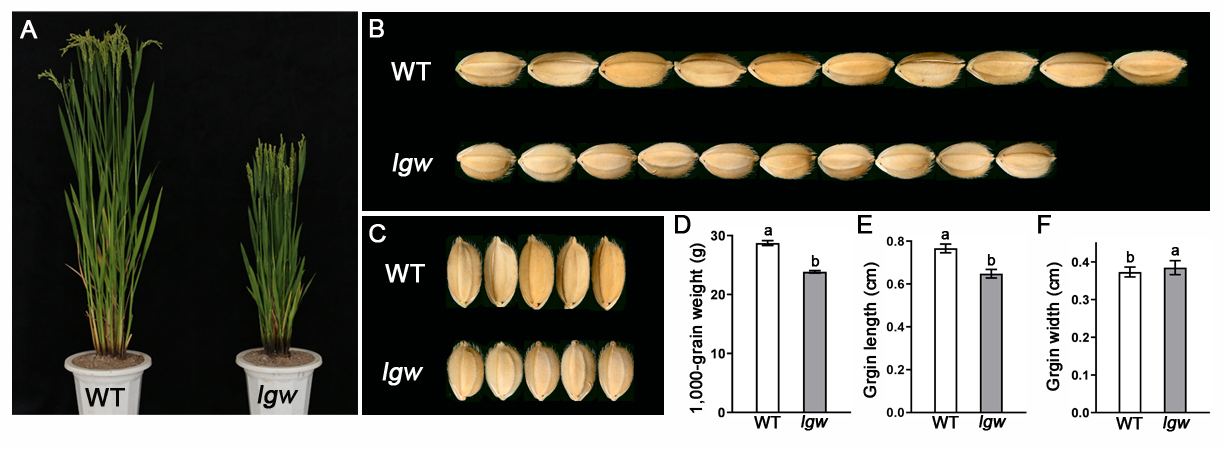A rice (Oryza sativa) mutant, low grain weight (LGW) was isolated by a research team led by Prof. WU Yuejin from the Hefei Institutes of Physical Science (HFIPS) of the Chinese Academy of Sciences (CAS). The researchers proved that LGW mutation led to reduced grain length through decreasing cell elongation and proliferation.
Results were published in Frontiers in Plant Science.
Grain weight is a major determinant in rice yield, which is tightly associated with grain size. However, despite decades of studies, the underlying molecular mechanisms for regulating grain size still remained unclear.
In this study, the research team obtained rice small grain mutant LGW by ion beam mutagenesis. They found that LGW was a new allelic variation of brittle culm gene BC12 by map-base cloning approach.
According to the researchers, the LGW mutation site was located in the nuclear localization signal region of BC12, which affected its nuclear localization. Overexpression of this gene could significantly increase grain length and thousand grain weight.
"We can tell that LGW is a positive regulator for regulating grain length," said YE Yafeng, first author of the study.
LGW/BC12 affected grain size by directly binding to the promoter of the grain length gene GW7 and regulating its transcription.
BC12 is a typical fragile culm gene, and mutations in it result in brittle culm phenotype, but straw brittleness is not evident in LGW mutants. It is hypothesized that LGW/BC12 depends on its different biological functions in regulating cell wall synthesis and grain size.
"These findings reveal that LGW plays an important role in regulating grain size, and manipulation of this gene provides a new strategy for regulating grain weight in rice," said YE.







